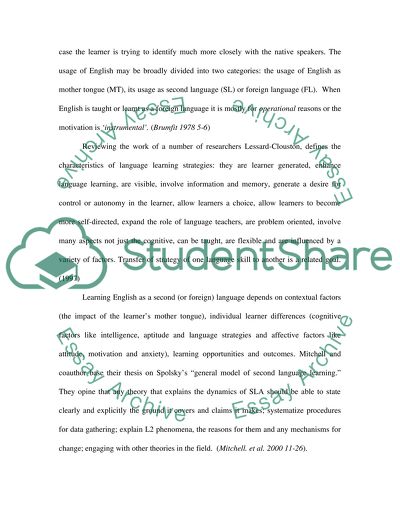Cite this document
(“Review of current literature on vocabulary acquisition in teaching and Essay”, n.d.)
Retrieved from https://studentshare.org/english/1512557-review-of-current-literature-on-vocabulary-acquisition-in-teaching-and-learning-english-as-a-foreign-language-efl
Retrieved from https://studentshare.org/english/1512557-review-of-current-literature-on-vocabulary-acquisition-in-teaching-and-learning-english-as-a-foreign-language-efl
(Review of Current Literature on Vocabulary Acquisition in Teaching and Essay)
https://studentshare.org/english/1512557-review-of-current-literature-on-vocabulary-acquisition-in-teaching-and-learning-english-as-a-foreign-language-efl.
https://studentshare.org/english/1512557-review-of-current-literature-on-vocabulary-acquisition-in-teaching-and-learning-english-as-a-foreign-language-efl.
“Review of Current Literature on Vocabulary Acquisition in Teaching and Essay”, n.d. https://studentshare.org/english/1512557-review-of-current-literature-on-vocabulary-acquisition-in-teaching-and-learning-english-as-a-foreign-language-efl.


